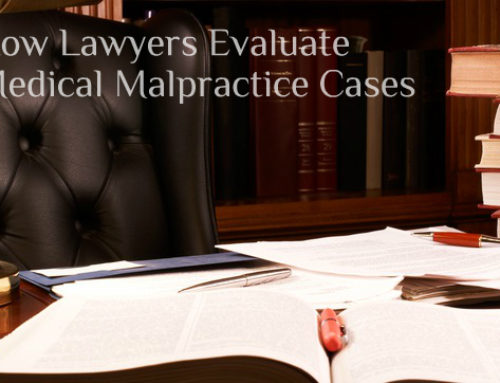A birth injury can be long-lasting or temporary, mild or severe. The same type of injury varies in the type and severity of symptoms from one infant to the next. Symptoms don’t always appear at the same time, either. They may be evident right away or only appear after the child is old enough to go to school. Sometimes injuries begin with the treatment given or neglected to the mother prior to birth. In other cases, the injuries are caused by the actions or inactions of the doctor during the birthing process.
Injuries to the Brain
– Cerebral Palsy
The most common type of birth injury impacting the brain is cerebral palsy, or CP. Cerebral palsy actually refers to a group of conditions caused by damage to the brain either prior to or during birth. CP causes an impairment of muscle coordination, affecting the person’s ability to move and maintain appropriate posture. It prevents the brain from communicating normally with the muscles. Once cerebral palsy develops, the effects last a lifetime and it often worsens as the affected person grows older. As an adult, they may have epilepsy, visual, hearing, learning, speech, and intellectual impairments. There is no current cure for CP. All they can do is try to manage the condition as well as possible.
Congenital CP refers to CP that occurs prior to or during birth. This type of CP is often caused by maternal infections such as chicken pox, urinary tract infections, or rubella. Low birth weights in single or multiple births also increase the risk of CP. Other known causes include infertility treatments resulting in premature birth, jaundice, administering some types of drugs, and various birth problems.
Acquired cerebral palsy is a brain injury that develops 28 days or more after birth. This type of CP is much more common than the congenital form. The effects of low birth weight, blood flow problems, or other conditions that aren’t treated can develop in the weeks after birth. Acquired CP can also develop after traumatic head injuries from being dropped or struck during an injury.
Many cases of cerebral palsy occur for no known reason. Other cases are preventable when the doctor treats the initial condition in the mother or baby. This includes detecting, monitoring, and treating maternal infections. Other conditions include prolapsed umbilical cord, using birth-assisting tools incorrectly, or failing to perform an emergency C-section when conditions call for it.
– Brain Ischemia
Brain ischemia is another type of brain injury that results when the brain is deprived of oxygen and the blood drains out. Sometimes oxygen deprivation leads to seizures and other electrical disorders that cause seizures resulting in brain damage. Any time a brain injury occurs in an infant, the hospital or doctor may be to blame. Birth injuries are a type of medical malpractice. If your baby’s injury was caused by negligence, you may have a valid malpractice claim. It’s the doctor’s responsibility to provide preventive care for both mother and baby.
Muscle-Related Injuries
These injuries are typically easy to diagnose. The affected area shows signs of limited movement or paralysis. Sometimes doctors cause lacerations, fractures, or bruises during birth. These injuries can cause injuries to the muscles. These include skull fractures or cephalohematoma, a condition in which the area between the brain and the outer layers of skin is bruised. There are different types of muscle-related birth injuries including:
– Brachial Plexus
This injury occurs to the upper area of the arm, usually during delivery. The injury results in weakness of the muscles and an inability to use all of the muscles in the area of injury. Some injuries extend to the shoulder and hands. Sometimes brachial plexus is accompanied by electrical-type shocks and burning sensations.
– Erb’s Palsy
Sometimes the name of Erb’s palsy and brachial plexus are used to mean the same thing. However, with Erb’s palsy, the nerves in the upper arm are affected. Symptoms include a loss of feeling and weakness. Severe injuries can cause total paralysis in the affected area.
– Klumpke’s Palsy
This is yet another form of brachial plexus which results from damage to the nerves in the lower arm. The symptoms usually impact the wrists, fingers, and arms. In most cases, newborns have total paralysis in the affected area. The affected hand usually forms into a permanent, claw-like shape.
– Shoulder Dystocia
Shoulder dystocia occurs during delivery when the infant’s head and shoulders become lodged behind the mother’s pelvic bone. This birth injury rarely occurs, but when it does, the results are often severe. It can cause breathing difficulties, collarbone fractures, brachial plexus fractures, and cerebral palsy. Sometimes the injury is so severe that it causes death. Shoulder dystocia can also cause injuries to the mother including hemorrhaging and uterine rupture.
Infection-Related Injuries
Infections occur before, during, or shortly after birth. They can be caused by a number of bacteria, viruses, or yeast including:
- Hepatitis B
- Hepatitis C
- Candidiasis
- Herpes
- Cytomegalovirus (CMV)
- HIV
- Meningitis
- Listeriosis
- Sepsis
- Toxoplasmosis
All of these infections are potentially dangerous to newborns. If the doctor fails to treat the infection as soon as it is detected, permanent injuries can occur. This includes brain injuries, physical disabilities, cognitive problems, paralysis, and vision problems.
Proving the cause of an infection can be more challenging than some other types of injuries. The mother can carry some types of infections without experiencing any symptoms. For example, some types of strep or meningitis can be passed to the baby without realizing it.
If the doctor fails to take the appropriate action when an infection is diagnosed in the mother or baby, he is responsible for the resulting injury. Depending on the type of infection, treatment might include prescribing antibiotics or performing a c-section delivery. The latter is used to prevent spreading a virus from the mother to the child during childbirth.
Meconium Aspiration Syndrome
This condition occurs when the infant inhales meconium and amniotic fluid during delivery. Meconium is the dark green substance that makes up the infants first feces. Inhaling the mixture sometimes floods the lungs and interferes with the infant’s ability to take in enough oxygen.
During pregnancy, the infant may defecate in response to stress resulting from problems with the placenta. This can allow the infant to inhale the meconium while it’s still in the uterus. It also increases the likelihood of breathing it in during delivery.
Some conditions that cause meconium aspiration include:
- Uncontrolled Diabetes
- High Blood Pressure
- Passing the Infant’s Due Date
- Lack of Oxygen to the Infant in Utero
The incidence of meconium aspiration syndrome is less than it used to be. Still, a long and difficult delivery still puts the infant at risk. Again, the cause of the condition determines whether the doctor was negligent in treating a condition in the mother.
Persistent Pulmonary Hypertension of the Newborn (PPHN)
Persistent pulmonary hypertension of the newborn (PPHN) is a serious breathing problem that occurs during delivery. During childbirth, an infant’s circulation changes to accommodate its ability to breath outside of the womb. Blood vessels to the lungs open up to allow blood to circulate. When they fail to open enough, the baby has difficulty getting enough air. The lack of oxygen can cause the baby to take on a bluish color. Other signs of PPHN include slow breathing and grunting, hands and feet that feel cool to the touch, low blood pressure, and low blood oxygen levels.
PPHN usually occurs in babies who are full-term or 34 weeks or more at delivery. Sometimes it occurs in babies with other breathing problems or after a difficult birth. Other times, the condition occurs due to medical negligence. Certain types of prescription drugs have been linked to high blood pressure during pregnancy. This and other conditions, including infections, unnecessary c-sections, and untreated infant asphyxia can lead to PPHN.
Other Common Causes of Birth Injury
Physicians are expected to detect some injuries during pregnancy, including those that result from folic acid deficiency, spina bifida, and anemia. Sometimes just prescribing supplements to the mother can prevent these injuries from occurring. Failing to do so can put the blame on the doctor.
What to Do After a Birth Injury
Sometimes birth injuries occur through no fault of the doctor or the hospital. The reason for the injury may not even be known. In many instances, the physician’s negligence caused the injury. In order to win a medical malpractice case, you must prove that the physician caused the injury. In the United States, four elements must be proven to prove a malpractice case, including:
- A professional duty was owed to the patient
- There was a breach of this duty
- The injury resulted from the breach
- The injury resulted in damages
These elements apply to any area of medical treatment and the negligence may extend to support staff and the hospital. Sometimes proving who is at fault is the most challenging aspect of any medical malpractice case. That’s why every parent who suspects they have a valid birth injury claim should contact an experienced malpractice attorney to explain their rights.
Most doctors work independently of the hospital rather than being their employees. Often, a physician’s bio will read that they are ‘associated’ with a certain hospital. This means that the doctor uses the facility to treat patients on his or her behalf. If the doctor’s negligence results in a birth injury, the resulting medical malpractice case will be against them directly.
The medical support staff, on the other hand, are usually employed by the hospital. If a hospital staff member is directly responsible for an injury, the injured party may be able to sue the hospital.
There are exceptions to the rule in malpractice cases about who is at fault. If the hospital is aware of a doctor’s incompetence, they may be responsible for the damages caused by the doctor. If there are other complaints against the doctor, this makes it even easier to prove the hospital was negligent.
When to Act
Each state has a statute of limitations for how long you have to file a medical malpractice claim. This time usually varies between one and three years from the time of the negligent act. Failing to file during this time frame will usually result in the claim being dismissed.
One important exception applies to injuries that aren’t apparent at the time they are caused. When a child suffers learning disabilities due to a birth injury, their parents don’t realize there’s a problem until they sign up for school. A good malpractice attorney can show that the injury occurred during birth but the symptoms didn’t present until years later.
Visit an attorney as soon as you are aware of the injury. An experienced attorney can tell you whether you have a case and whether exceptions to the statutes of limitations apply. He may be able to get the deadline extended if your case fits within the allowed exceptions.
Talk to a Birth Injury Lawyer
Introducing a new baby into your family is one of the most joyful occasions you can share. When medical malpractice results in a birth injury, it is emotionally devastating. Getting the necessary treatment for your baby’s injury can cost a lot of money. The impact of the injury can put a strain on your finances, your emotions, and your relationships. It may be a burden your child lives with for the rest of their lives.
When you put the delivery of your child into the hands of a medical professional, you had the expectation of getting the best possible medical treatment. If they were negligent in delivering that treatment, you deserve compensation to help lessen the burden.
Contact Ingerman & Horwitz L.L.P. to schedule a free consultation today. We can help you understand your rights and whether you have a valid medical malpractice case. If you pursue your case, we won’t charge anything until you win. We understand what you’ve been going through. We’re here to help make your situation as stress-free as possible for you and your entire family.















